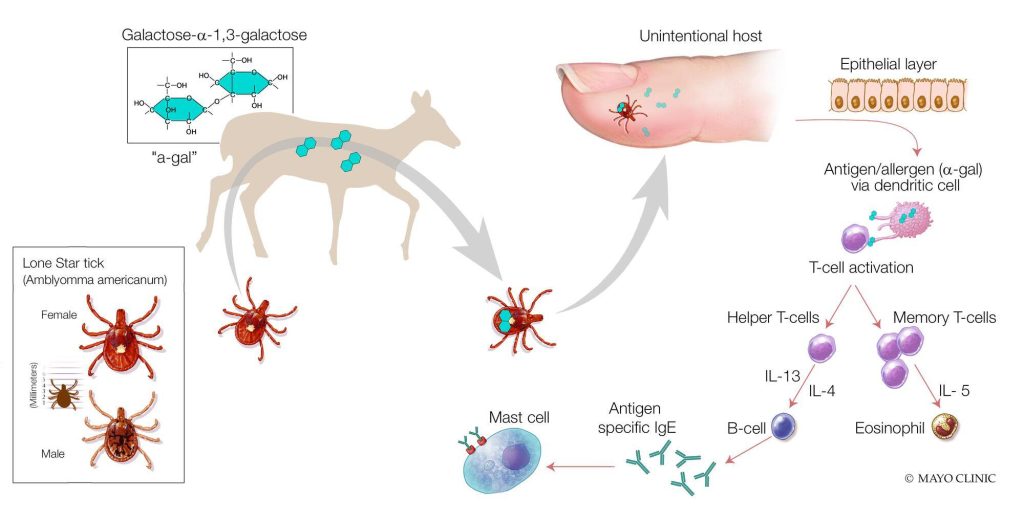You may have heard about alpha-gal syndrome also known as the meat allergy illness or tick bite meat allergy. The Centers for Disease Control and Prevention (CDC) says more than 110,000 suspected cases of alpha-gal syndrome were identified between 2010 and 2022. However, the CDC says that number may be much higher because people need to be tested for alpha-gal syndrome and there are many healthcare providers who may not be familiar with the emerging disease.
What is alpha-gal and how do you get it? Dr. Bobbi Pritt, director of the Clinical Parasitology Laboratory at Mayo Clinic, is a tick expert and has more in this Mayo Clinic Minute.
Watch: The Mayo Clinic Minute
Journalists: Broadcast-quality video (0:59) is in the downloads at the end of this post. Please courtesy: “Mayo Clinic News Network.” Read the script.
“Alpha-gal is a short abbreviation for galactose-alpha-1, 3-galactose. It’s a sugar moiety that is found on nonprimate mammalian meats,” says Dr. Pritt.
That includes meats like beef, pork, lamb and venison.
“People that have alpha-gal syndrome after getting a tick bite develop an allergy to meat, and, specifically, it’s all mammalian meat, except for primate meat,” says Dr. Pritt.
That means poultry, fish and seafood are excluded. The CDC has a list of food products that may contain alpha gal.
In the U.S., you can mostly blame the lone star tick, though other ticks have not been ruled out.
“The lone star tick is named as such because it has a white-yellow dot on its back on the female, which is said to look like a lone star,” says Dr. Pritt.
How the lone star tick transmits alpha gal infection

Lone Star tick that has picked up a protein/antigen from a deer and transmitted it to a human. After the tick bite to the human, a standard IgE allergy sensitization reaction occurs.
Symptoms may start two to four hours after consuming meat or meat products with alpha-gal sugars.
“Symptoms could be mild, such as hives, swelling around their mouth, but it could also be quite severe,” she says.
Dr. Pritt stresses that the best prevention is avoiding ticks altogether.
Tick prevention tips:
- When possible, avoid areas where ticks can be found, including tall grasses, bushes, shrubs and leaf litter.
- Use a bug spray or repellent with 30% or more of DEET.
- Wear clothing that covers your arms and legs to give ticks fewer places to bite.
- Tuck pants into socks while hiking.
- Examine your children, pets and gear after an outdoor excursion.
- Check your scalp, behind your knees, belly button and around your body after being outdoors.
Check out Dr. Pritt’s interactive ABCs of tick prevention.
